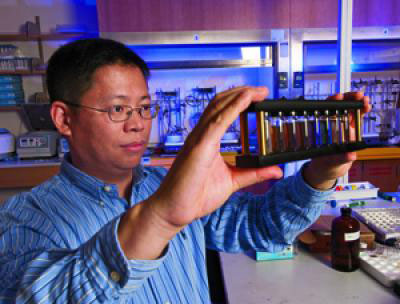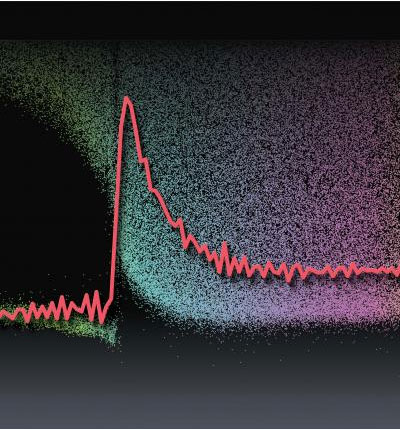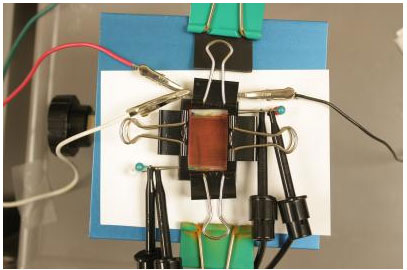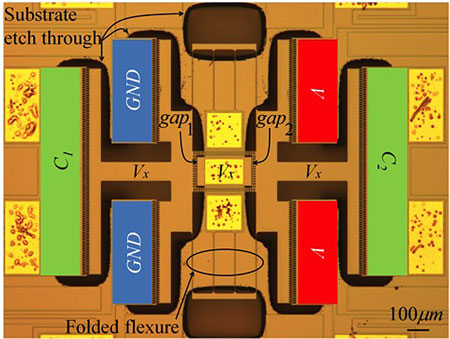Biomimetic and bioinspired nanomaterials
These ten volumes provide an excellent, in-depth overview of all nanomaterial types and their uses in the life sciences.
Aug 12th, 2010
Read more
These ten volumes provide an excellent, in-depth overview of all nanomaterial types and their uses in the life sciences.
Aug 12th, 2010
Read moreClemson University is hosting Nano2010, an international conference of scientists whose research will help us understand how nanotechnology will affect our world.
Aug 12th, 2010
Read moreThe State University of New York (SUNY), in partnership with The Research Foundation of SUNY and SUNY campuses statewide, has launched five regional 'Technology Transfer' hubs across the SUNY research enterprise as part of a novel effort to spur new high-tech business opportunities and stimulate economic growth across New York State.
Aug 12th, 2010
Read more So far no imaging technique has been up to the task of defining the melanoma's boundaries accurately enough to guide surgery. Instead surgeons tend to cut well beyond the visible margins of the lesion in order to be certain they remove all the malignant tissue. Two scientists at Washington University in St. Louis have developed technologies that together promise to solve this difficult problem.
So far no imaging technique has been up to the task of defining the melanoma's boundaries accurately enough to guide surgery. Instead surgeons tend to cut well beyond the visible margins of the lesion in order to be certain they remove all the malignant tissue. Two scientists at Washington University in St. Louis have developed technologies that together promise to solve this difficult problem.
Aug 11th, 2010
Read moreA new paper by University of Notre Dame physicist Boldizsar Janko and colleagues offers an important new understanding of an enduring mystery in chemical physics.
Aug 11th, 2010
Read moreIn a development that holds potential for both data storage and biomedical imaging, Ohio State University researchers have used a new technique to obtain the highest-ever resolution MRI scan of the inside of a magnet.
Aug 11th, 2010
Read moreHarry Kroto, awarded the Nobel Prize in Chemistry 1996, is the latest to take part in the 'Ask a Nobel Laureate' series on YouTube and Facebook. 'Ask a Nobel Laureat' gives online viewers worldwide the unique opportunity to put their questions directly to a Nobel Laureate and see the responses.
Aug 11th, 2010
Read moreA European team of researchers has now developed a method that allows to observe the motions of electrons.
Aug 11th, 2010
Read moreA 'smart' nanomaterial recently developed at the University of Dayton Research Institute for multi-purpose use in aircraft coatings, wind turbines and other large-scale commercial applications may also lead to a significant breakthrough in glaucoma treatment.
Aug 11th, 2010
Read moreThe controlled synthesis of complex structures in the nanometer range and their integration into modern technologies represents a challenge with high potential. A group of German and Spanish scientists succeeded now in synthesizing materials which form two-dimensional nanostructures by self-organization mechanisms.
Aug 11th, 2010
Read moreIn enger Zusammenarbeit ist es drei Arbeitsgruppen der Ludwig-Maximilians-Universitaet (LMU) Muenchen und des Exzellenzclusters Nanosystems Initiative Munich (NIM) gelungen, den Wirkstoff Colchicin in konzentrierter Form mit Hilfe von Nanopartikeln direkt in Zellen einzuschleusen.
Aug 11th, 2010
Read more It turns out that watching paint dry might not be as boring as the old adage claims. A team led by Yale University researchers has come up with a new technique to study the mechanics of coatings as they dry and peel, and has discovered that the process is far from mundane.
It turns out that watching paint dry might not be as boring as the old adage claims. A team led by Yale University researchers has come up with a new technique to study the mechanics of coatings as they dry and peel, and has discovered that the process is far from mundane.
Aug 10th, 2010
Read more Several e-reader products on the market today use electrophoretic displays, in which each pixel consists of microscopic capsules that contain black and white particles moving in opposite directions under the influence of an electric field. A serious drawback to this technology is that the screen image is closer to black-on-gray than black-on-white. Researchers at the University of Cincinnati Nanoelectronics Laboratory are actively pursuing an alternative approach for low-power displays.
Several e-reader products on the market today use electrophoretic displays, in which each pixel consists of microscopic capsules that contain black and white particles moving in opposite directions under the influence of an electric field. A serious drawback to this technology is that the screen image is closer to black-on-gray than black-on-white. Researchers at the University of Cincinnati Nanoelectronics Laboratory are actively pursuing an alternative approach for low-power displays.
Aug 10th, 2010
Read more A new technology enabling tiny machines called micro electromechanical systems to 'self-calibrate' could make possible super-accurate and precise sensors for crime-scene forensics, environmental testing and medical diagnostics.
A new technology enabling tiny machines called micro electromechanical systems to 'self-calibrate' could make possible super-accurate and precise sensors for crime-scene forensics, environmental testing and medical diagnostics.
Aug 10th, 2010
Read moreJust as the path of photons of light can be directed by a mirror, atoms possessing a magnetic moment can be controlled using a magnetic mirror. Research investigates the feasibility of using magnetic domain walls to direct and ultimately trap individual atoms in a cloud of ultracold atoms.
Aug 10th, 2010
Read moreOut of sight is not out of mind for a group of Hong Kong researchers who have demonstrated that burying a layer of silver nanoparticles improves the performance of their organic electronic devices without requiring complex processing.
Aug 10th, 2010
Read more